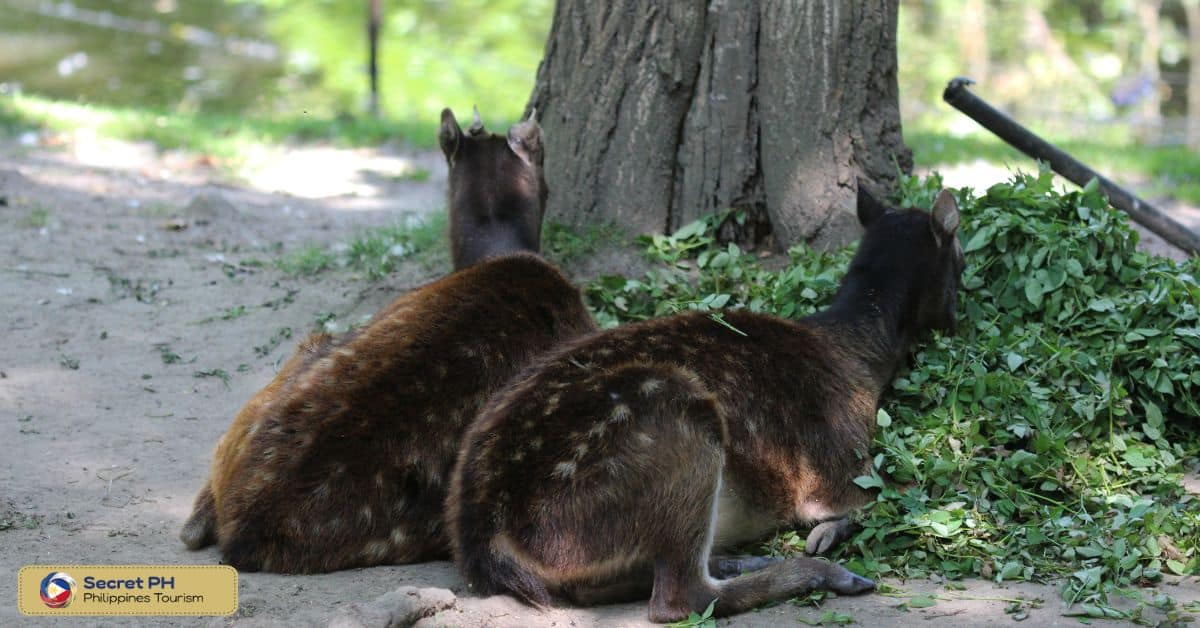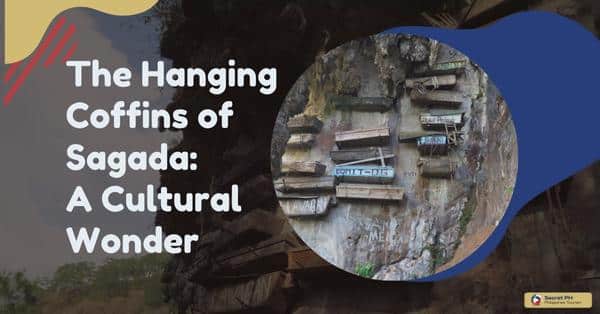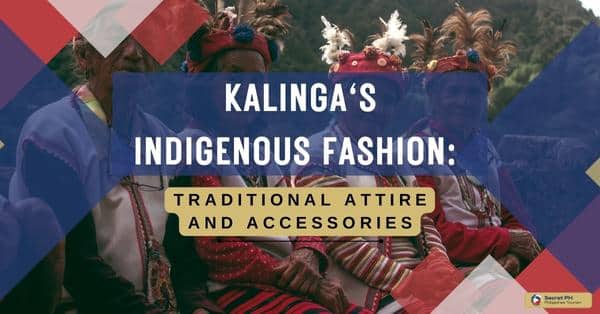The Philippines is home to a diverse range of wildlife that can be encountered on a wildlife safari. Some of the animal encounters that you can have in the country include seeing the tarsier, the world’s smallest primate, the Philippine eagle, the world’s largest eagle, and the Palawan bearcat, a carnivorous mammal. Other animals to spot include the whale shark, the dugong, the tamaraw, and the Philippine crocodile, among others.
From cuddly primates to fearsome predators, there’s no shortage of exciting wildlife to see in the Philippines. In this blog post, we’ll explore 10 of the best animal encounters you can have on a Philippine wildlife safari. Get ready for a wild ride!

Philippines as a Travel Destination for Wildlife Enthusiasts
As a travel destination for wildlife enthusiasts, the Philippines brims with diverse and fascinating flora and fauna. With its geographical location and climate, the country is home to several endemic species. Some of which are critically endangered. From the picturesque Tubbataha Reef National Marine Park, where one can marvel at the colorful marine life thriving in the rich coral ecosystem. The Philippine Eagle Center in Davao City, which houses the majestic and rare Philippine eagle.
There are numerous wildlife destinations to discover. Adventurers can also take a hike in the Banaue Rice Terraces, which teem with various species of birds fluttering around the verdant rice paddies. Indeed, the Philippines is a great venture for wildlife enthusiasts who wish to witness the fascinating and unique flora and fauna that await them.

Animal Encounter 1: Philippine Eagle
The Philippine Eagle is one of the largest and most powerful birds of prey in the world. Standing at a height of up to 3 feet and with a wingspan of up to 7 feet. It is certainly an impressive sight to behold. With its striking grayish-brown plumage and a distinct, shaggy crest of feathers on its head. This majestic bird of prey is truly unique. Native to the Philippines, it is a highly endangered species, with only an estimated 400 pairs left in the wild.
Despite its formidable size, the Philippine Eagle feeds primarily on small mammals and birds. It is using its powerful talons to catch its prey. With its status as a national symbol of the Philippines, the conservation and protection of this magnificent bird is crucial to preserving the country’s natural heritage for future generations.

Where to find them in the wild
The Philippine Eagle is one of the rarest and most majestic birds in the world. This national bird of the Philippines is endemic to the country. This makes it a must-see for nature enthusiasts who want to experience the country’s biodiversity. To catch a glimpse of this extraordinary bird, head to the Philippine Eagle Center in Davao City. It is where you can see them up close and support conservation efforts. If you’re feeling more adventurous, you can go on a trek in Mindanao’s mountain range.
Philippine Eagle Center
Address: Malagos-Baguio Road, Brgy, Davao City, 8000 Davao del Sur
Opening Hours: Monday (8:30 AM – 4:30 PM) / Tuesday – Sunday (8 AM – 3 PM)
Phone: +639177089084
Animal Encounter 2: Tarsiers
The Tarsier, scientifically known as Tarsius Syrichta, is a small, nocturnal primate species found in Southeast Asia. It is best known for its distinctive physical features that set it apart from other primates. For starters, its large eyes, which are each about the size of its brain, are excellent for night vision. Its long, powerful hind legs and flexible feet allow it to jump incredible distances of up to six feet from tree to tree.
Moreover, its long tail offers it balance and stability. This enables it to climb up trees with ease. Despite its remarkable physical features, the Tarsier is an endangered species, threatened by habitat loss and illegal pet trading. Efforts are being made toward its conservation as various organizations work to educate locals and monitor their populations.

Where to find them in the wild
If you’re a fan of primates and are looking to catch a glimpse of the world’s smallest primate. The tarsier, then the Philippines is your destination. These fascinating little creatures are native to the islands of the Philippines. It is where they live in the dense forests.
Tarsiers are known for their uniquely large eyes. They are amongst the few nocturnal primates in the world. Seeing a tarsier in its natural habitat can be a real challenge. There are conservation areas and sanctuaries set up across the islands that offer a chance to see these elusive primates up close.
Philippine Tarsier Sanctuary
Address: Tarsier Sanctuary Rd, Corella, Bohol
Opening Hours: Monday – Sunday (9 AM – 4 PM)
For pictures and more information, click here.
Animal Encounter 3: Whale Sharks
Whale sharks are fascinating creatures that never fail to amaze both marine biologists and ordinary individuals alike. They are the largest fish in the world. These gentle giants can grow up to 40 feet long and weigh as much as 20 tons. Their unique spotted patterns and gigantic size make them a favorite among divers and snorkelers. They are especially in popular destinations like the Philippines.
Despite their massive appearance, whale sharks have a calm and peaceful nature. This makes them safe to swim with as long as one maintains a safe distance. Their feeding habits also make them a vital component of the marine ecosystem. They filter feed on plankton and small fish. The sheer size and grace of these magnificent creatures leave a lasting impression on anyone who has the privilege of encountering them.

Where to find them in the wild
These gentle giants can grow up to 40 feet long and weigh nearly 20 tons. One of the best places for whale shark sightings is the Philippines. This country is home to several locations where you can swim with these massive creatures. It includes the islands of Cebu, Donsol, and Oslob. While the experience is undeniably breathtaking, it’s important to remember to practice responsible tourism. Being careful not to disturb the shark’s natural habitat during your underwater adventure.
Vitton & Woodland Beach Resorts
Address: WHFG+JPV, Donsol-Pio Duran Road, Barangay Dancalan, Donsol, 4715 Sorsogon
Opening Hours: Monday – Sunday (6 AM – 10 PM)
Phone: +639175444089
Animal Encounter 4: Saltwater Crocodile
Saltwater crocodiles are one of the largest and most ferocious predators in the animal kingdom. These reptiles can grow to be up to 23 feet long and weigh over 2,200 pounds. They have a powerful jaw with over 60 teeth, capable of exerting pressures of up to 3,000 pounds per square inch. This makes them one of the strongest biters in the world.
Saltwater crocodiles can be found throughout the Indo-Pacific region, including the Philippines. These creatures are incredibly adaptable and can thrive in a variety of environments. Despite their intimidating demeanor, they are an essential part of the ecosystem. They play an important role in maintaining balance in their habitats.

Where to find them in the wild
The Philippines is home to one of the world’s largest species of crocodiles: the saltwater crocodile. Also known as the estuarine crocodile, it can be found in various regions of the Philippines but primarily in the Palawan Islands. These creatures thrive in both saltwater and freshwater environments, making them adaptable and able to survive in various habitats.
If you’re looking to spot a saltwater crocodile, head to the Palawan National Wildlife Rescue and Conservation Center, where you can view these impressive animals up close while learning about conservation efforts to protect them.
Palawan Wildlife Rescue and Conservation Center (Crocodile Farm)
Address: QMXV+FRF, Puerto Princesa South Road, Puerto Princesa, Palawan
Opening Hours: Monda – Sunday (8 AM – 5 PM)
Phone: +639950338967
Animal Encounter 5: Dugong
Dugongs, also known as sea cows, are fascinating marine mammals found in the Philippines and other parts of the world. These gentle giants can grow up to three meters long and weigh over 500 kilograms. They have a round, plump body that is covered in a thick layer of blubber, making them excellent swimmers. Dugongs feed on seagrasses and other marine plants, using their flexible snouts to uproot them from the seabed.
Unfortunately, this magnificent creature is listed as vulnerable to extinction due to habitat loss and human activity. It is crucial that we continue to protect and preserve the habitats of these unique marine mammals to ensure their survival for future generations.

Where to find them in the wild
Dugongs, also known as sea cows, can be found in various locations all over the world, but if you’re planning to spot one in the Philippines, there are a few specific places to look. The seas around the northern coasts of the Philippine islands, such as the Calamian Islands in Palawan and Apo Island in Negros Oriental, are known to be popular feeding grounds for these gentle giants.
These areas are home to lush seagrass meadows which provide the perfect environment for dugongs to browse and feed. However, it’s important to remember that dugongs are known to be shy and elusive creatures, so keep your eyes peeled and be patient while searching for them.
Dugong Dive Center
Address: El Rio y Mar R, Coron, Busuanga, San Jose, 5316 Palawan
Opening Hours: Monday – Sunday (8 AM – 6 PM)
Phone: +639209519100
Animal Encounter 6: Palawan Bearcat
The Palawan Bearcat, also known as the Palawan Binturong, is a fascinating species that can only be found in the Philippines. These solitary creatures have a unique appearance, featuring shaggy black fur and a distinctive scent reminiscent of popcorn. They are omnivorous, with a diet consisting of fruits, small mammals, and insects. Despite their name, they are not true bears and are actually part of the Civet family.
The Palawan Bearcat is an important part of the Philippines’ biodiversity and is a popular attraction for tourists visiting the region. However, they are currently listed as a vulnerable species due to habitat loss and hunting. Conservation efforts are crucial for their survival, and it is important to raise awareness about these incredible creatures.

Where to find them in the wild
The Palawan Bearcat, also known as the Palawan Stink Badger, can be found in the Philippines. Specifically, this native animal can be located on the island of Palawan, located in the western region of the country. With its distinctive fluffy black and white coat, the Palawan Bearcat is a unique species to the Philippines, and one worth seeking out for nature enthusiasts and animal lovers alike.
Hikers and adventurers can look for this elusive creature as they explore the dense forests and rugged terrain of Palawan, increasing their chances of spotting one of the few hundred remaining in the wild.
Palawan Wildlife Rescue and Conservation Center
Address: QMXV+FRF, Puerto Princesa South Road, Puerto Princesa, Palawan
Opening Hours: Monday – Sunday (8 AM – 5 PM)
Phone: +639950338967
Animal Encounter 7: Philippine Deer
The Philippine Deer, also known as the Visayan Spotted Deer, is a rare and majestic species found only in the Philippines. With a striking appearance boasting a reddish-brown coat adorned with white spots, this deer species is bound to catch your eye. They are relatively small in size, measuring up to 95 centimeters in height at the shoulder and about 100 kilograms in weight.
Their habitat ranges from lowland forests to grassy hillsides and mountainous regions, where they graze on a diet of leaves, grass, and fruits. Unfortunately, due to habitat loss and hunting, the Philippine Deer has become critically endangered. Conservation organizations are working tirelessly to protect and preserve this magnificent species, reminding us all of the importance of maintaining a balanced ecosystem and protecting the diversity of nature.

Where to find them in the wild
The Philippine Deer, also known as the Visayan Spotted Deer, can be found in various regions of the Philippines, including Panay Island, Negros Island, and Masbate Island. These beautiful animals are known for their distinctive spotted coat and graceful movements. They typically inhabit forests and grasslands, and can often be spotted grazing on grass or browsing on leaves and fruits. Unfortunately, the population of Philippine Deer has dwindled in recent years due to habitat loss and hunting. Conservation efforts are underway to protect this species and ensure its survival for future generations to enjoy.
Palawan Wildlife Rescue and Conservation Center
Address: QMXV+FRF, Puerto Princesa South Road, Puerto Princesa, Palawan
Opening Hours: Monday – Sunday (8 AM – 5 PM)
Phone: +639950338967
Animal Encounter 8: Tamaraw
The Tamaraw is a fascinating species that can be found only in the Philippines. This animal is a type of water buffalo, but it is a lot smaller compared to its cousin. This makes the Tamaraw particularly unique and rare, as it is a highly endangered species.
It has a compact and muscular build that enables it to maneuver the rugged terrain of the Philippine islands with ease. With short and curved horns, this animal is an impressive sight to behold at a distance. Though the Tamaraw is elusive and shy in nature, it is a national treasure that is worth protecting for generations to come.

Where to find them in the wild
The Tamaraw is a rare and endangered animal species that can only be found in the Philippines. This majestic creature, also called the Mindoro Dwarf Buffalo, is known for its robust and muscular built, making them one of the most iconic animals in the country. If you want to catch a glimpse of this fascinating animal, your best chance would be in the Tamaraw Gene Pool Farm in Mindoro Island.
This is a protected area that serves as a sanctuary for the Tamaraws, having been declared a national park. Visitors can take part in guided hikes and tours, which will give them the chance to see these gentle giants in their natural habitat. So if you have a heart for wildlife and conservation, visiting the Tamaraw Gene Pool Farm should definitely be on your travel itinerary.
Tamaraw Gene Pool Farm
Address: Brgy. Manoot, Rizal, OCCIDENTAL MINDORO
For pictures and more information, click here.
Animal Encounter 9: Flying Lemur
The Flying Lemur, also known as the Sunda Flying Lemur, is a fascinating creature that can be found in the countries of Southeast Asia, including the Philippines. Despite its name, this mammal is not actually a lemur and does not truly fly. Rather, it uses the skin flaps between its limbs to glide through the air, sometimes traveling up to 100 meters in a single glide.
These creatures are tree-dwelling and nocturnal, and are known for their shy and elusive nature. If you’re fortunate enough to see one in the wild, you’ll be treated to an unforgettable sight of a graceful creature soaring through the air, a testament to the power and beauty of nature.

Where to find them in the wild
The Flying Lemur is a fascinating creature with a distinctive appearance that attracts the attention of animal lovers around the world. If you are searching for the perfect place to observe this elusive mammal in its natural habitat, then the Philippines is your ideal destination. Known locally as “kagwang,” the Flying Lemur is found in the tropical forests of this Southeast Asian country. With a keen eye and a willingness to venture deep into the jungle, you can experience the thrill of witnessing this remarkable animal in action. Whether you are a wildlife photographer or simply an adventurous traveler, the Philippines is the ultimate destination for spotting the incredible Flying Lemur.
Raja Sikatuna National Park
Address: P44F+68X, Bilar, Bohol
Opening Hours: 24hrs
Animal Encounter 10: Philippine Cockatoo
The Philippine Cockatoo, also known as the “Katala,” is a bird species endemic to the Philippines. This magnificent bird is one of the rarest and most endangered parrot species in the world. The Philippine Cockatoo’s feathers are predominantly white, with striking yellow and orange under its wings, tail, and crest. The bird’s distinct screeching call can be heard from far away and is often heard in the forests of the Philippines.
The Philippine Cockatoo’s diet includes fruits, nuts, and seeds, and they play an essential role in seed dispersal in Philippine forests. Conservation efforts are being made to preserve the remaining population of this bird species, which is threatened by habitat loss and illegal hunting. Despite the challenges, the Philippine Cockatoo remains a symbol of the country’s rich biodiversity, and its beauty is truly a sight to behold.

Where to find them in the wild
Its population has significantly declined due to habitat loss and poaching, making it one of the rarest bird species in the world. If you’re interested in spotting this majestic creature, your best bet would be to visit the Palawan Wildlife Rescue and Conservation Center in Puerto Princesa, Palawan. This sanctuary has a breeding program dedicated to saving the Philippine Cockatoo and provides educational tours that allow visitors to learn about the bird’s biology and conservation efforts. Other areas in the country where the bird has been spotted include Tawi-Tawi, Cebu, and New Bataan in Davao de Oro.
Palawan Wildlife Rescue and Conservation Center
Address: QMXV+FRF, Puerto Princesa South Road, Puerto Princesa, Palawan
Opening Hours: Monday – Sunday (8 AM – 5 PM)
Phone: +639950338967
In Conclusion
The Philippines offers a unique wildlife safari experience with 10 animal encounters you can have in the country. From swimming alongside whale sharks to trekking through the lush forests to spot exotic birds and primates, the Philippines is the perfect place for nature lovers and adventure seekers alike. Not only does this eco-tourism activity allow for an up-close and personal experience with some of the rarest animals in the world but it also supports conservation efforts to protect these species and their natural habitats.
With its breathtaking landscapes and diverse wildlife, the Philippines is a must-visit destination for anyone seeking an unforgettable adventure in nature.








